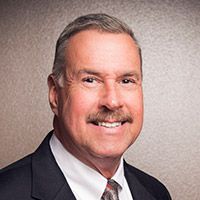Conservative Investors Have Reason to Cheer
For years they've been plagued by near-zero interest rates forcing them to look for gains in riskier places. Now that's changing.


Low interest rates have hit conservative investors hard, especially pre-retirees and retirees. The name of the game in retirement is income. However, with interest rates hovering around zero for so long, creating real, substantial income — while maintaining a conservative position — has been a challenge, to put it lightly.
Those challenges may be becoming less daunting, though, as the climate on interest rates has finally started to change. Here’s what’s going on and what it means for conservative investors today.
The tide turns; markets plunge, then boom
On Dec. 16, 2015, the Federal Open Market Committee (the Fed) announced the first interest-rate hike in almost a decade. Economists had been anticipating it for months, believing ultra-low interest rates were impeding economic recovery from the Great Recession, the more than 50% decline experienced by the S&P 500 from October 2007 to March 2009. Although the economy has been growing steadily, economists believed if interest rates returned closer to pre-recession levels, it would spark faster economic growth and expansion.
From just $107.88 $24.99 for Kiplinger Personal Finance
Become a smarter, better informed investor. Subscribe from just $107.88 $24.99, plus get up to 4 Special Issues

Sign up for Kiplinger’s Free Newsletters
Profit and prosper with the best of expert advice on investing, taxes, retirement, personal finance and more - straight to your e-mail.
Profit and prosper with the best of expert advice - straight to your e-mail.
When the members of the Fed raised interest rates, they were unable to forecast what would happen next. There’s nothing the market hates more than uncertainty, and that’s exactly what the first rate hike since 2006 caused. January 2016 proved to be the worst beginning to the stock market in history, with the S&P 500 finally bottoming out on Feb. 11, 2016, at 1829 — more than a 10% decline. Many investors chose to abandon ship during this period by pulling their funds from the market. The nausea caused by the torrential waves (i.e., market volatility) stirred up by the rate hike made them decide to head for the nearest lifeboat, but those investors who hung on for the ride experienced an average annual return of just under 12% for 2016.
Plans for further hikes get back on track
Originally, the Fed planned for four additional rate hikes in 2016 after their initial hike in December 2015. However, after the market’s reaction to the first hike, it wasn’t until Dec. 14, 2016, that the Fed would gain enough confidence to raise rates again. This caused them to completely miss the mark of raising rates four times throughout the course of the year, but along with their Dec. 14 hike, the Fed’s press release was teeming with confidence, projecting multiple rate hikes throughout 2017 due to a strengthening labor market, declining unemployment, increased household spending and rising inflation.
Even with two rate hikes under our belt, however, a one-year CD is paying a little over 1% at most local banks, and a five-year CD is paying about 2%. The story is the same with bonds and U.S. Treasuries. That’s a big problem for conservative investors. With inflation hovering around 2.2%, having money in these products means your investment is not keeping up with inflation, and you are consistently losing purchasing power.
The plight of conservative investors improves
These low returns on traditional income-bearing investments have pushed conservative investors into riskier investments with the hope of greater returns. This phenomenon has been noted consistently within the financial industry upon observing significant amounts of money flowing into high-dividend-paying portfolios. This is a risky game for conservative investors. Dividends can be a great source of income, but being over-weighted in equities provides little protection from market downturns. Taking money out of such a portfolio during a market correction can spell disaster for a retiree. Although 12% returns are nice, like the annual return on the S&P 500 for 2016, drawdowns like the one experienced at the beginning of that year can cripple an improperly allocated portfolio.
In short, the confidence coming from the Fed about raising rates is good news. It provides hope that traditional income-producing investments will once again be a viable option for conservative investors as they look to balance their portfolios while still creating the income they need.
As a financial adviser, I am the trusted captain of my client’s portfolios, and it is my job to see that my clients are able to obtain the income they need in retirement without being completely dependent upon the market. Keeping my clients diversified means, no matter what starts the next set of torrential waves, their portfolios may take on water but will not sink.
No part of this communication should be construed as an offer to buy or sell any security or provide investment advice or recommendation. Securities offered through GF Investment Services, LLC, Member FINRA/SIPC, 501 North Cattlemen Road, Suite 106, Sarasota, FL 34232. (941) 441-1902. Investment advisory services offered through Global Financial Private Capital, LLC, an SEC Registered Investment Advisor. Registration with the SEC does not imply any certain level of skill or training.
Profit and prosper with the best of Kiplinger's advice on investing, taxes, retirement, personal finance and much more. Delivered daily. Enter your email in the box and click Sign Me Up.

Roger Ford has 30 years of experience in retirement income planning. After receiving his formal education at the University of Cincinnati, Ford started his own business, Conservative Financial Solutions. He is a Registered Financial Consultant (RFC) and obtained his certification through the International Association of Registered Financial Consultants. He actively holds Series 6, 63 and 65 licenses and is a licensed agent in life, accident and health and property and casualty insurance.
-
 States That Tax Social Security Benefits in 2026
States That Tax Social Security Benefits in 2026Retirement Tax Not all retirees who live in states that tax Social Security benefits have to pay state income taxes. Will your benefits be taxed?
-
 QUIZ: What Type Of Retirement Spender Are You?
QUIZ: What Type Of Retirement Spender Are You?Quiz What is your retirement spending style? Find out with this quick quiz.
-
 How to Avoid the Financial Quicksand of Early Retirement Losses
How to Avoid the Financial Quicksand of Early Retirement LossesSequence of returns — experiencing losses early on — can quickly deplete your savings, highlighting the need for strategies that prioritize income stability.
-
 This Is How Early Retirement Losses Can Dump You Into Financial Quicksand (Plus, Tips to Stay on Solid Ground)
This Is How Early Retirement Losses Can Dump You Into Financial Quicksand (Plus, Tips to Stay on Solid Ground)Sequence of returns — experiencing losses early on — can quickly deplete your savings, highlighting the need for strategies that prioritize income stability.
-
 How an Elder Law Attorney Can Help Protect Your Aging Parents From Financial Mistakes
How an Elder Law Attorney Can Help Protect Your Aging Parents From Financial MistakesIf you are worried about older family members or friends whose financial judgment is raising red flags, help is out there — from an elder law attorney.
-
 Q4 2025 Post-Mortem From an Investment Adviser: A Year of Resilience as Gold Shines and the U.S. Dollar Dives
Q4 2025 Post-Mortem From an Investment Adviser: A Year of Resilience as Gold Shines and the U.S. Dollar DivesFinancial pro Prem Patel shares his take on how markets performed in the fourth quarter of 2025, with an eye toward what investors should keep in mind for 2026.
-
 Is Your Emergency Fund Running Low? Here's How to Bulk It Back Up
Is Your Emergency Fund Running Low? Here's How to Bulk It Back UpIf you're struggling right now, you're not alone. Here's how you can identify financial issues, implement a budget and prioritize rebuilding your emergency fund.
-
 An Expert Guide to How All-Assets Planning Offers a Better Retirement
An Expert Guide to How All-Assets Planning Offers a Better RetirementAn "all-asset" strategy would integrate housing wealth and annuities with traditional investments to generate more income and liquid savings for retirees.
-
 7 Tax Blunders to Avoid in Your First Year of Retirement, From a Seasoned Financial Planner
7 Tax Blunders to Avoid in Your First Year of Retirement, From a Seasoned Financial PlannerA business-as-usual approach to taxes in the first year of retirement can lead to silly trip-ups that erode your nest egg. Here are seven common goofs to avoid.
-
 How to Plan for Social Security in 2026's Changing Landscape, From a Financial Professional
How to Plan for Social Security in 2026's Changing Landscape, From a Financial ProfessionalNot understanding how the upcoming changes in 2026 might affect you could put your financial security in retirement at risk. This is what you need to know.
-
 6 Overlooked Areas That Can Make or Break Your Retirement, From a Retirement Adviser
6 Overlooked Areas That Can Make or Break Your Retirement, From a Retirement AdviserIf you're heading into retirement with scattered and uncertain plans, distilling them into these six areas can ensure you thrive in later life.